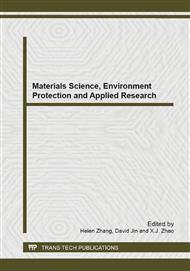p.481
p.485
p.489
p.493
p.499
p.503
p.509
p.513
p.517
Contaminant Trasportation of Cd2+ in the Cushion System of the Municipal Waste Landfill
Abstract:
The cushion systems with low leakage performance are usually utilized in the municipal solid waste landfills to prevent the contaminants of the leachate from polluting the groundwater and soil beneath the landfill. Even there are the rigorous demands in related specifications in China and other countries all over the world for the design of the cushion system in the landfill. Pollution of the groundwater and the soil beneath the landfill still occurred in a large number of rubbish landfills because of the seepage. To investigate the seepage rate of the Cd2+ in the cushion systems, the minimum requirements for the design of the cushion systems are summarized according to the provisions of China and US. Comparative studies using 1-dimensional migration model are performed to investigate the seepage performance of the cushion systems consisting of geomembrance (GM) and compacted clay layer (CCL) sastifying the related minimum design demands. It could be concluded that the cushion system designed according to the minimum demands of China provide better anti-leakage performance, while that of US perform the lower. Finally, some advices for the releavent design standards are suggested according to the analyses.
Info:
Periodical:
Pages:
499-502
Citation:
Online since:
March 2014
Authors:
Keywords:
Price:
Сopyright:
© 2014 Trans Tech Publications Ltd. All Rights Reserved
Share:
Citation:


